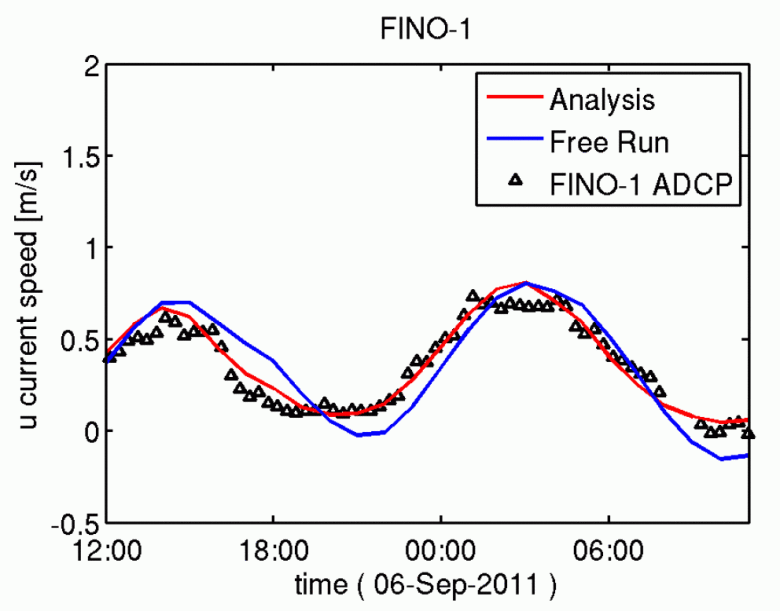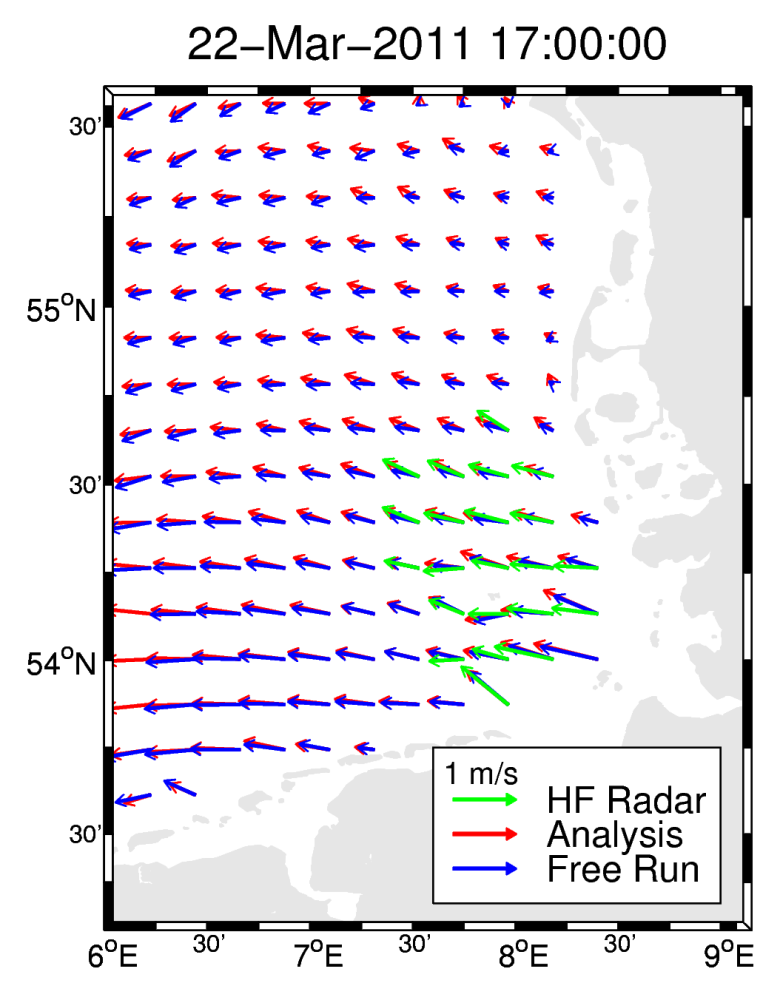Data Assimilation

Ocean state estimates provided by numerical models contain errors that increase with prediction time. Errors are due to imperfect model dynamics as well as to uncertainties in the initial state and the forcing fields. Data assimilation is a technique to reduce estimation errors by dynamically consistent combination of numerical models and observations. COSYNA applies different statistical and variational assimilation techniques to correct the model now- and forecasts. The two figures contrast model results of the "free" run, i.e.,without the use of observations, with the respective data assimilation run using HF radar measurements as additional information.
The assimilation of surface current fields derived from HF radar observations: Validation with FINO-1 ADCP data (6 September 2011). The green arrows represent observational HF radar data.
The data assimilation obviously affects areas beyond the observational coverage. This is nicely demonstrated in the validation at FINO1. Both model results are plotted for two full tidal cycles at the position of the FINO1 platform located outside the HF radar range. Data assimilation forces the tidal phase back in time by about one hour making it more consistent with the ADCP observations. Note that these observations are not included in the assimilation.
More
Flotsam in the North Sea. Measurements and computer models help us determine where flotsam drifts in the North Sea.
(Article on ESKP)


